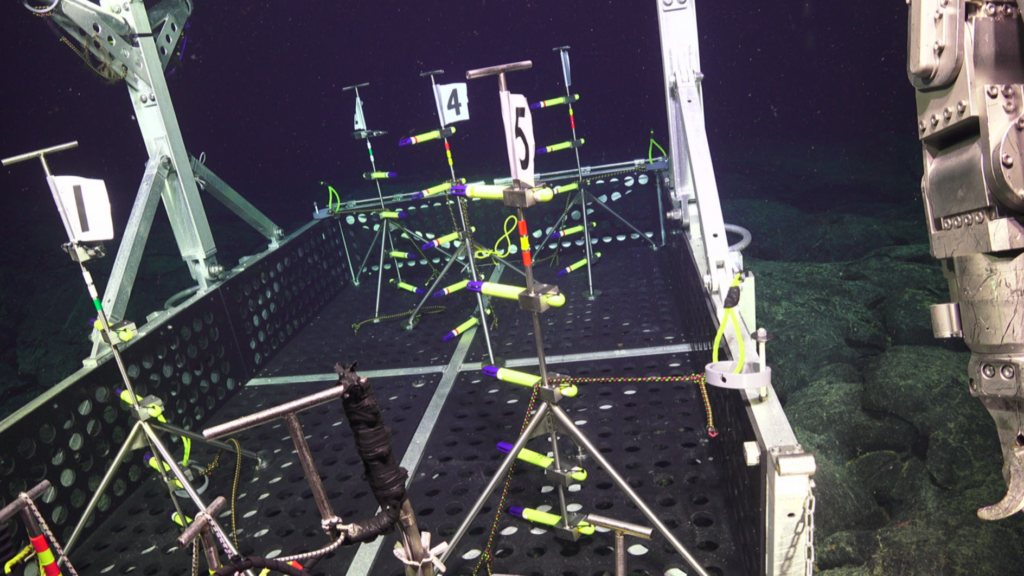In July 2018, a team of researchers and engineers from Rutgers University and the University of Washington Applied Physics Laboratory deployed the Cabled Observatory Vent Imaging Sonar (COVIS) to the NSF-funded Ocean Observatories Initiative Cabled Array. COVIS, a multibeam acoustic sensor, is installed at 1600m depth at the ASHES hydrothermal vent field within the Caldera of Axial Seamount, an active volcano on the Juan de Fuca plate spreading zone, 300 miles off the Oregon coast.
Selecting a site for COVIS and calibrating the sound backscatter response to heat content after installation required high-frequency measurements of the hot water being expelled from diffuse venting sites around ASHES. To make these measurements, the COVIS team built temperature arrays using RBRsolo³ temperature and RBRduet³ temperature+depth standalone loggers.
“We knew we would only have one opportunity to perform the survey.” says Aaron Marburg, UW-APL engineer, “by using independent, off-the-shelf temperature loggers we maximized our chances of getting useful data. The RBRsolo³ T gave us the fast sampling rate, fast time constant, accuracy and lifespan we needed.” RBR loggers were used in two temperature arrays. For the site selection survey, a 5-m vertical array was designed to be lowered from the winch on the ROV Jason. The array used 8 RBR loggers along its length, providing 50cm vertical resolution from 1 to 5 meters above the seabed, with a further six loggers in a flow-through weight at the bottom, providing 20cm resolution in the first meter above the seabed. Jason carried the array across a 40m by 40m area centered at two major hydrothermal vents within the ASHES field, developing a high-resolution map of temperature variation in the 5m closest to the bottom.
Once COVIS was deployed, the same loggers were re-arranged into five 1-m tall rigid arrays, each holding 5 RBR loggers at 20cm vertical spacing. These arrays were placed by the ROV at areas of intense diffuse venting around the ASHES vent field while being imaged by COVIS. At the conclusion of the dive, two of the arrays were recovered for immediate data analysis while the remaining three will stay on site for a year. Upon recovery in 2019 they will provide invaluable data for ground truthing the acoustic results from COVIS.
